Created: 2023-11-19 17:07
On a road without sideways, keeping an overview while driving is quite easy. However, the practice in the Netherlands is often different: in our busy road network, many roads intersect with each other. That is why when driving you regularly have to deal with traffic coming from the left or right.
The right has priority
This is the main rule of priority!
To ensure that traffic flows smoothly where roads meet, the main rule is: drivers from the right have priority.
This rule applies in all cases where two paved roads intersect and there are no signs or markings determining who has priority.
The right has priority applies to all equivalent intersections (see 4.2 Behavior at intersections). Drivers on unpaved roads must therefore always give way to drivers on paved roads. ‼️
Giving priority
Main rule: ensure the other person can continue their way unhindered.
When a driver comes from the right, you give him priority.
Giving right priority is:
- Slow down in time, so that the other person sees you are going to stop.
- Stop so that the other person can continue his way unhindered.
Here the red car is taking too much space, which affects the blue car ability to turn.
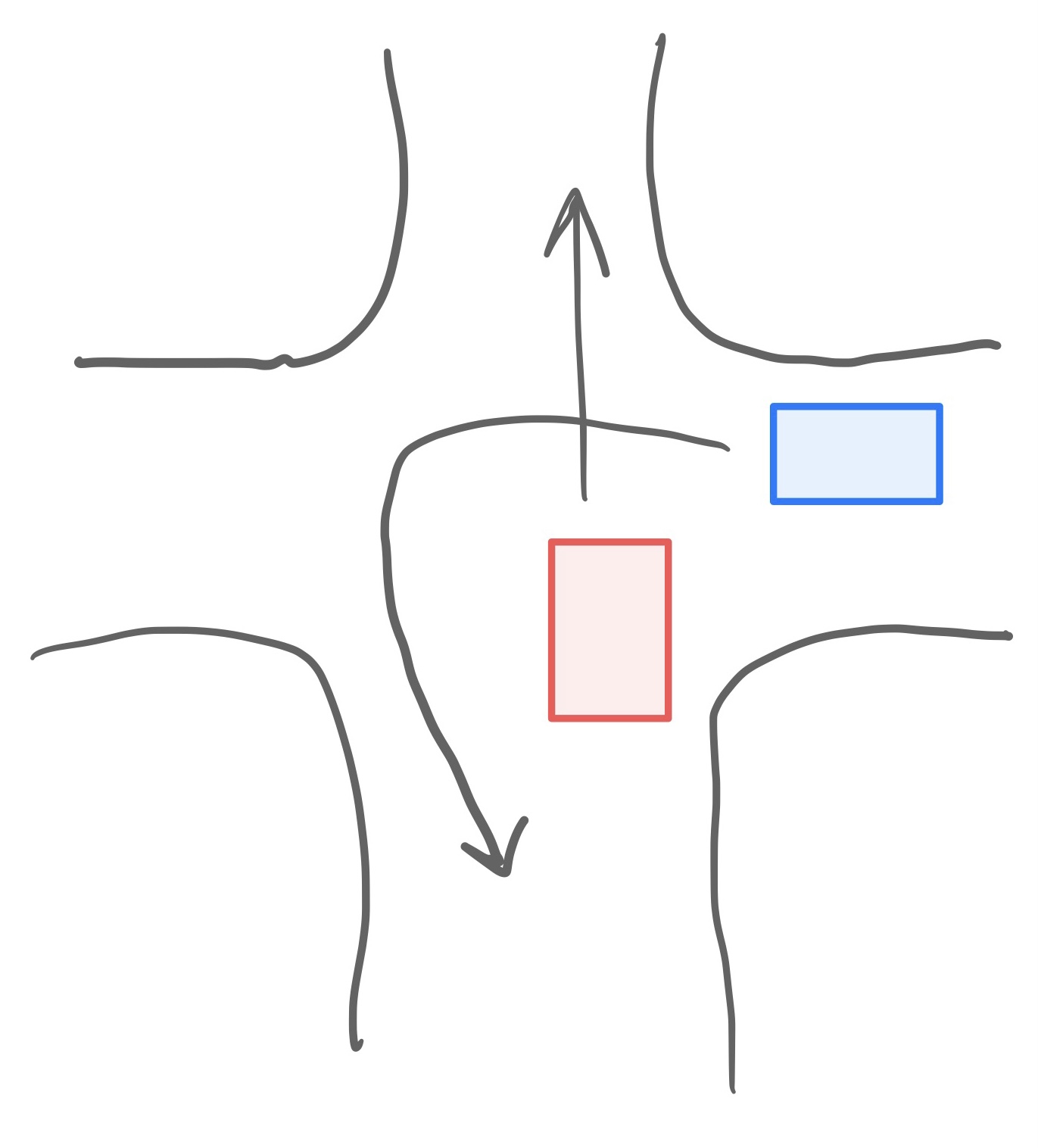
Here the blue car has enough space to drive safe.
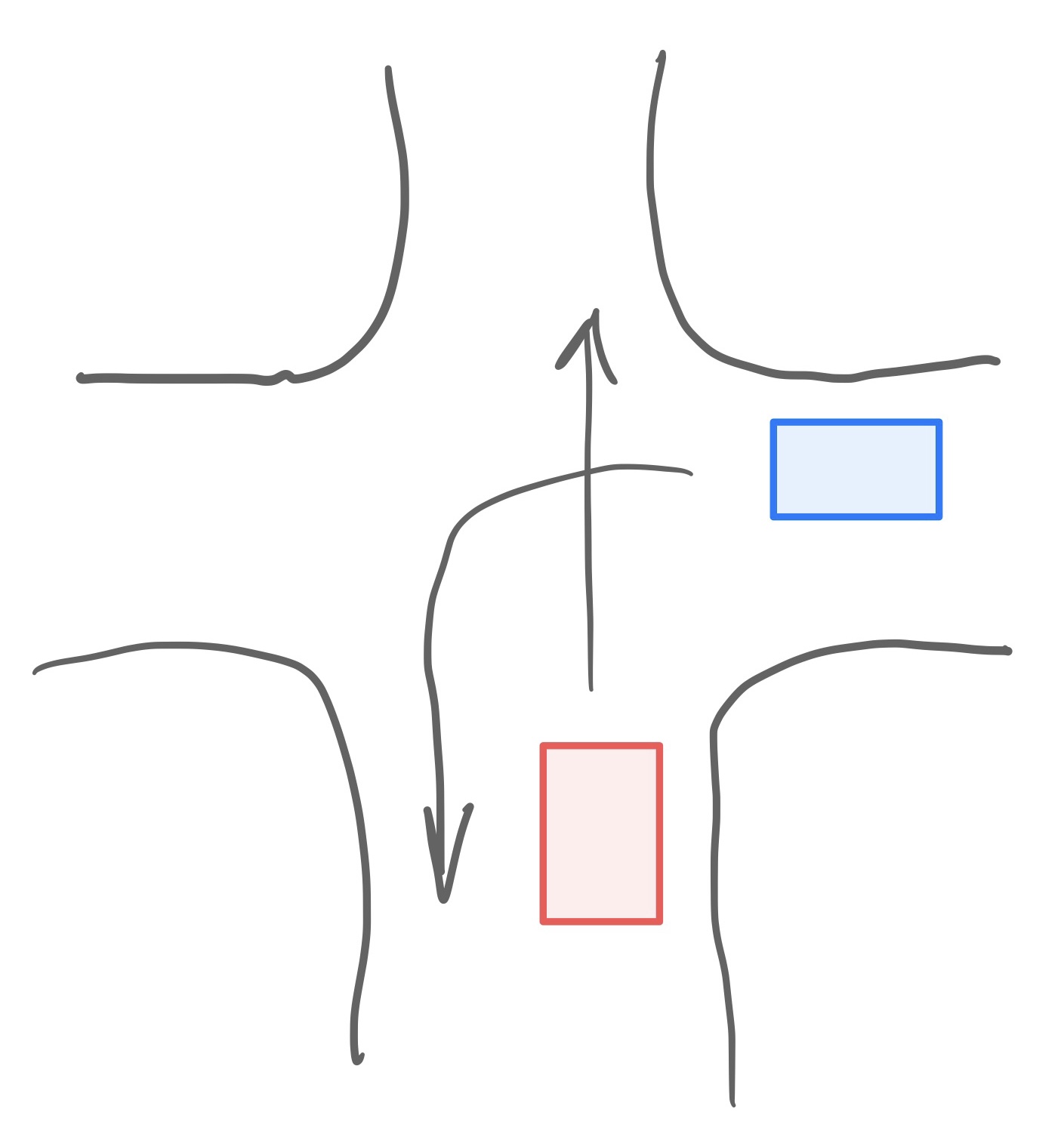
⚠️ IMPORTANT: if you have priority but other driver doesn’t give it to you then don’t drive on. Safety always comes before being right.
Priority roads
When driving on a priority road, drivers coming from both the left and right must give you priority, including trams.
The sign below (B1) indicates a priority road.

A curving priority road
The main roads goes on a curve, cars coming from the right must still give priority.
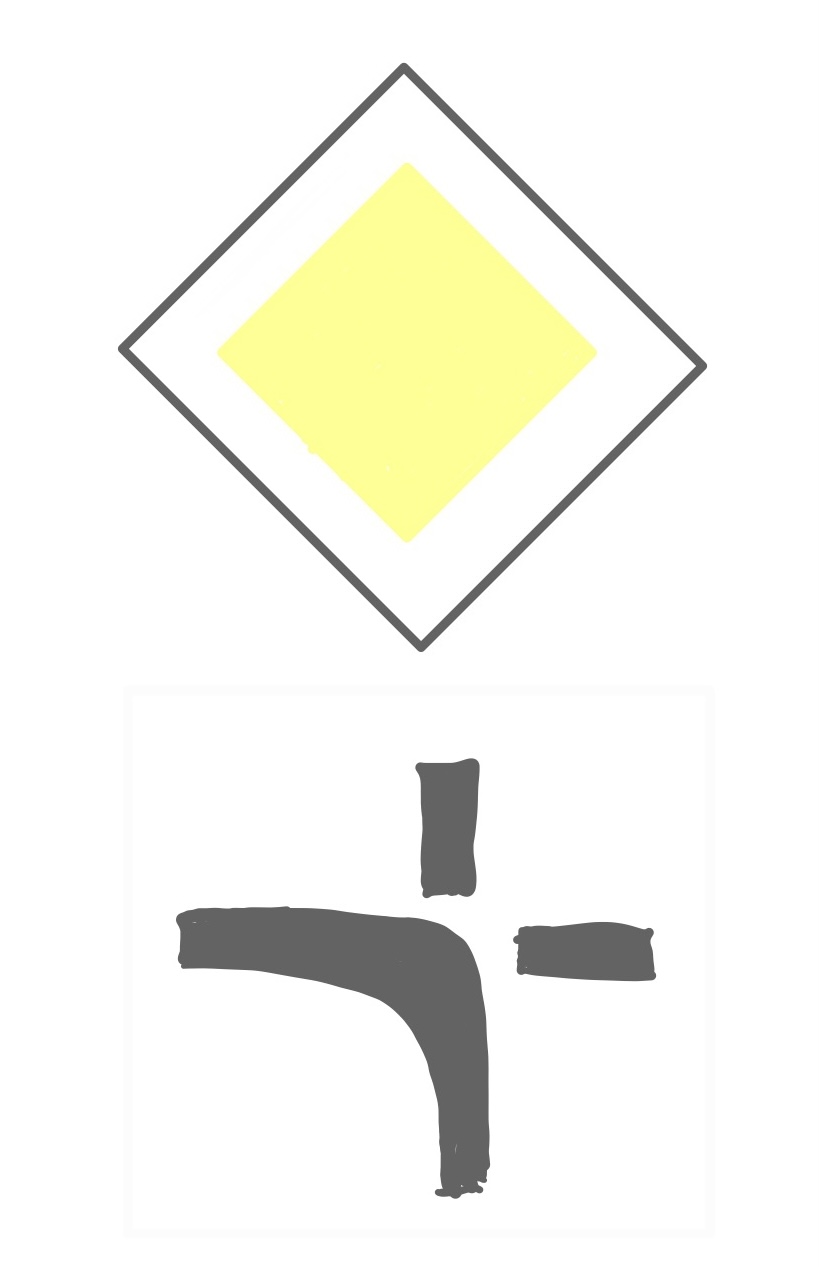
End of priority road
The sign below indicates end of priority road. Sometimes a sign below it denotes how many meters till the priority ends.
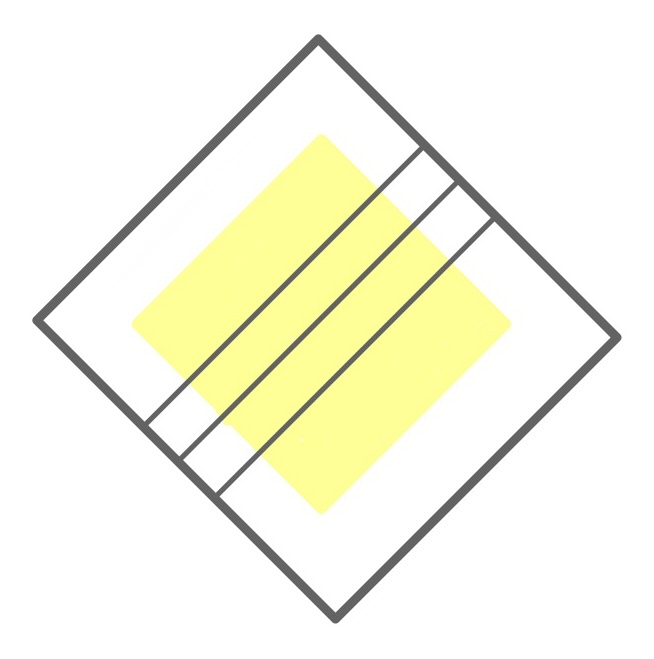
Approaching a major road
When approaching a major road, the following two signs indicates that priority must be giving to drivers on the major road, and that one has to come to a full stop before driving into the road, respectively.
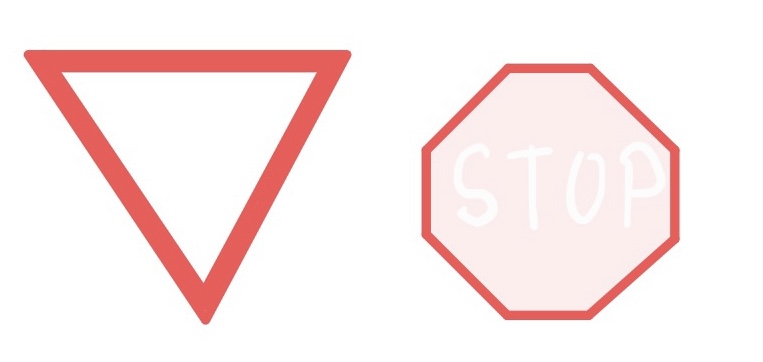
Priority regulations at intersections
The general rule is that drivers from the right have priority. In determining priority at intersections the following rules apply in ascending order:
- No signs, boards or traffic lights: right has priority.
- Traffic signs and markings on the road (such as shark teeth) take precedence over rule 1.
- Traffic lights take precedence over rule 2. When the lights aren’t working fall back to rule 2.
- Instructions from a traffic controller or police officer take precedence over everything else. Must always be followed.
Shark teeth point towards who has to give priority to the other drivers. 🦈🦷